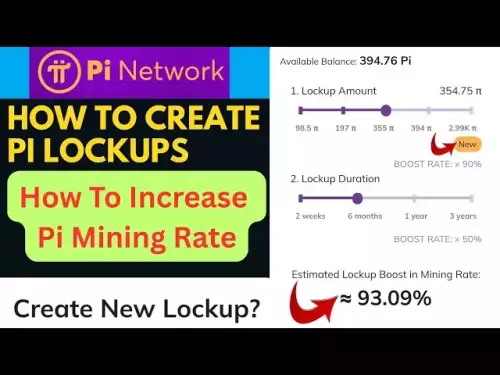-
 bitcoin
bitcoin $114779.865156 USD
2.30% -
 ethereum
ethereum $4226.519789 USD
2.39% -
 tether
tether $1.000545 USD
0.04% -
 xrp
xrp $2.890223 USD
0.92% -
 bnb
bnb $1030.029301 USD
2.95% -
 solana
solana $212.824944 USD
1.69% -
 usd-coin
usd-coin $0.999757 USD
0.01% -
 dogecoin
dogecoin $0.234961 USD
-0.27% -
 tron
tron $0.337174 USD
0.42% -
 cardano
cardano $0.804783 USD
0.09% -
 hyperliquid
hyperliquid $45.748770 USD
-2.85% -
 chainlink
chainlink $21.699170 USD
0.82% -
 ethena-usde
ethena-usde $1.001452 USD
0.08% -
 avalanche
avalanche $30.237800 USD
1.14% -
 stellar
stellar $0.372604 USD
1.52%
How to make a contract on Gate.io without losing money
To engage in contract trading on Gate.io securely, traders must thoroughly grasp contract basics, select appropriate contracts, and employ risk-management tools like leverage and stop-loss orders.
Nov 07, 2024 at 09:30 pm

How to Make a Contract on Gate.io Without Losing Money: A Comprehensive Guide
IntroductionThe cryptocurrency market offers a wide array of opportunities for investors, including contract trading. Contract trading allows traders to speculate on the price movements of underlying assets, potentially generating substantial profits. However, it's crucial to approach contract trading with caution to avoid losses. This comprehensive guide will lead you through the intricate process of making a contract on Gate.io, a leading cryptocurrency exchange, while safeguarding your capital.
Step 1: Understanding Cryptocurrency Contracts
- Cryptocurrency contracts are derivative instruments that allow traders to bet on the future price of an underlying asset, such as Bitcoin or Ethereum.
- Two main types of contracts exist: futures contracts and perpetual contracts.
- Futures contracts have a fixed expiration date, while perpetual contracts do not expire and remain active until closed.
Step 2: Choosing the Right Contract
- Gate.io offers a broad selection of contracts, including contracts based on the spot price, futures contracts, and perpetual contracts.
- Consider factors such as the underlying asset, trading fees, and expiration date when selecting a contract.
- Choose a contract that aligns with your trading strategy and risk tolerance.
Step 3: Opening an Account on Gate.io
- To trade contracts on Gate.io, you must first create an account.
- The account opening process is straightforward and requires basic personal information.
- After your account has been verified, you can fund it with cryptocurrencies to begin trading contracts.
Step 4: Understanding the Contract Interface
- Once you have opened an account, navigate to the "Contracts" section of Gate.io.
- The contract interface displays essential information such as the contract parameters, trading fees, and current market data.
- Familiarize yourself with the interface to ensure smooth trading operations.
Step 5: Setting Up Leverage and Stop-Loss
- Leverage allows you to trade with more capital than you have available in your account.
- Use leverage cautiously, as it can amplify both potential profits and losses.
- Set a stop-loss to automatically close your position if the price moves against you, limiting potential losses.
Step 6: Placing an Order
- There are three main order types: market orders, limit orders, and stop orders.
- Market orders are filled at the current market price.
- Limit orders are filled only when the price reaches a specified level.
- Stop orders are placed below (for longs) or above (for shorts) the current price and are activated when the price triggers the trigger price.
Step 7: Monitoring and Managing Your Position
- Once your order is executed, it's essential to monitor your position closely.
- Pay attention to the profit and loss (P/L), open and close prices, and unrealized profit.
- Adjust your trading strategy or close your position if the market moves against you.
Step 8: Closing Your Position
- To close a contract position, simply place an opposite order to your original order.
- For example, if you opened a long position, you would close it with a short position of the same size.
- Alternatively, you can use the "Take Profit" and "Stop Loss" features to automatically close your position when specific conditions are met.
Disclaimer:info@kdj.com
The information provided is not trading advice. kdj.com does not assume any responsibility for any investments made based on the information provided in this article. Cryptocurrencies are highly volatile and it is highly recommended that you invest with caution after thorough research!
If you believe that the content used on this website infringes your copyright, please contact us immediately (info@kdj.com) and we will delete it promptly.
- Bitcoin, Ethereum, and Correction Concerns: Navigating the Crypto Seas
- 2025-09-30 08:25:12
- ATH Crypto's $344M DePIN Treasury: Aethir's Bold Plan and Market Impact
- 2025-09-30 08:45:14
- XRP, Institutions, and ETF Filings: A New Era for Crypto?
- 2025-09-30 08:45:14
- Crypto Presales: Unveiling Growth Opportunities and the Quest for 100x Returns
- 2025-09-30 08:50:01
- China's Yuan Stablecoin: A Play to Challenge the Dollar's Digital Dominance?
- 2025-09-30 08:50:01
- Crypto Coins with 100x Potential: Navigating the Presale Opportunity Landscape
- 2025-09-30 08:50:01
Related knowledge

Practical parameter settings for a Bitcoin multi-timeframe moving average system
Sep 18,2025 at 10:54pm
Optimizing Timeframe Combinations for Bitcoin Trading1. Selecting appropriate timeframes is crucial when building a multi-timeframe moving average sys...

How can I filter out false breakouts in Dogecoin high-frequency trading?
Sep 22,2025 at 01:00am
Understanding False Breakouts in Dogecoin Trading1. A false breakout occurs when Dogecoin's price appears to move beyond a defined support or resistan...

Techniques for identifying tops and bottoms in the Bitcoin on-chain NVT model
Sep 20,2025 at 07:54pm
Understanding the NVT Model in Bitcoin Analysis1. The Network Value to Transactions (NVT) ratio is often described as the 'P/E ratio' of the cryptocur...

What does the surge in open interest in Bitcoincoin futures mean?
Sep 20,2025 at 11:18pm
Understanding the Surge in Dogecoin Futures Open Interest1. A surge in open interest within Dogecoin futures indicates a growing number of active cont...

How can I use the Ethereum USDT premium to gauge market sentiment?
Sep 18,2025 at 11:55pm
Understanding the Ethereum USDT Premium1. The Ethereum USDT premium refers to the price difference between USDT (Tether) traded on Ethereum-based plat...

What should I do if Ethereum staking yields decline?
Sep 20,2025 at 06:18am
Understanding the Causes Behind Declining Ethereum Staking Yields1. The Ethereum network transitioned to a proof-of-stake consensus mechanism with the...

Practical parameter settings for a Bitcoin multi-timeframe moving average system
Sep 18,2025 at 10:54pm
Optimizing Timeframe Combinations for Bitcoin Trading1. Selecting appropriate timeframes is crucial when building a multi-timeframe moving average sys...

How can I filter out false breakouts in Dogecoin high-frequency trading?
Sep 22,2025 at 01:00am
Understanding False Breakouts in Dogecoin Trading1. A false breakout occurs when Dogecoin's price appears to move beyond a defined support or resistan...

Techniques for identifying tops and bottoms in the Bitcoin on-chain NVT model
Sep 20,2025 at 07:54pm
Understanding the NVT Model in Bitcoin Analysis1. The Network Value to Transactions (NVT) ratio is often described as the 'P/E ratio' of the cryptocur...

What does the surge in open interest in Bitcoincoin futures mean?
Sep 20,2025 at 11:18pm
Understanding the Surge in Dogecoin Futures Open Interest1. A surge in open interest within Dogecoin futures indicates a growing number of active cont...

How can I use the Ethereum USDT premium to gauge market sentiment?
Sep 18,2025 at 11:55pm
Understanding the Ethereum USDT Premium1. The Ethereum USDT premium refers to the price difference between USDT (Tether) traded on Ethereum-based plat...

What should I do if Ethereum staking yields decline?
Sep 20,2025 at 06:18am
Understanding the Causes Behind Declining Ethereum Staking Yields1. The Ethereum network transitioned to a proof-of-stake consensus mechanism with the...
See all articles










































































